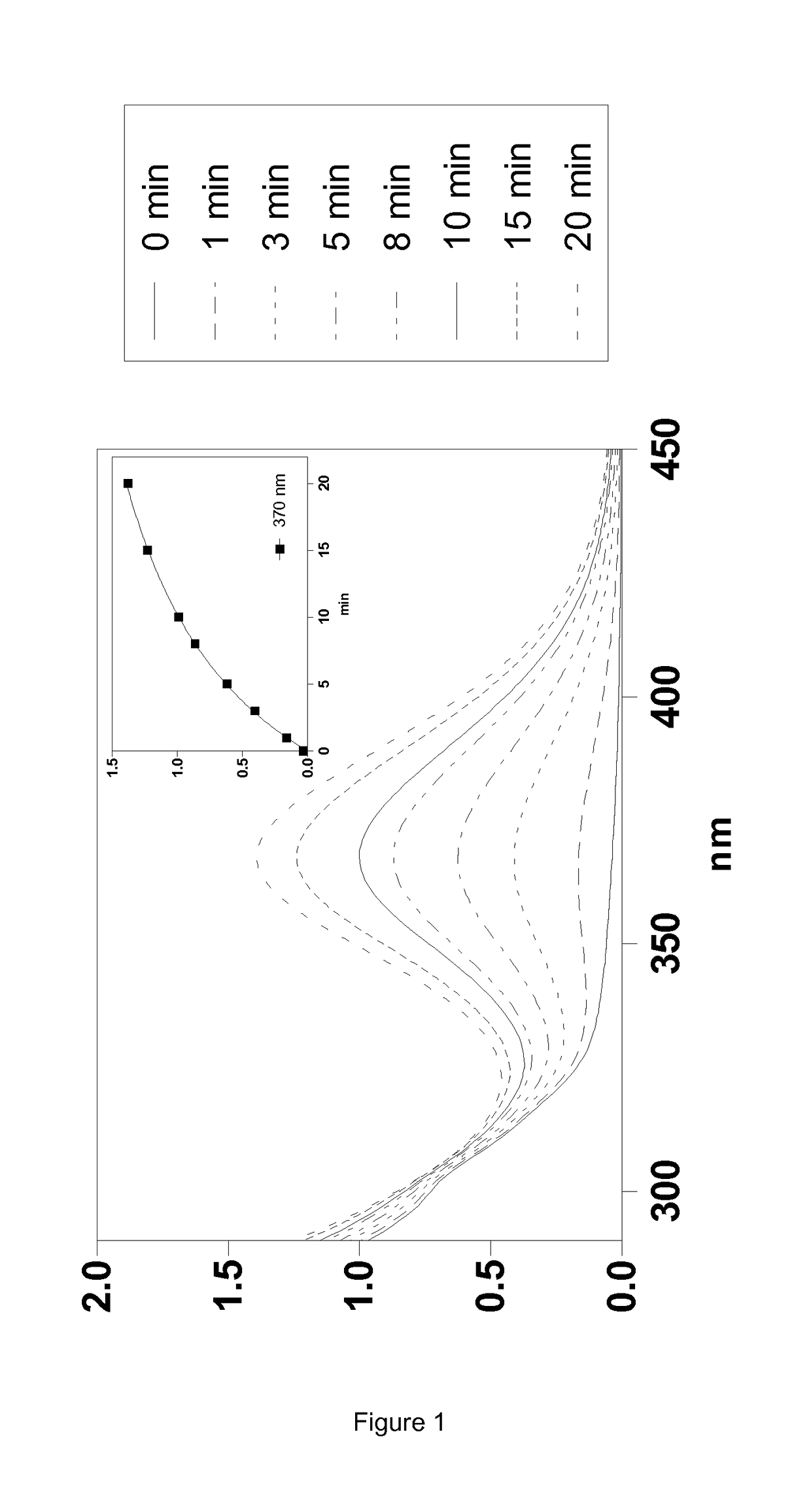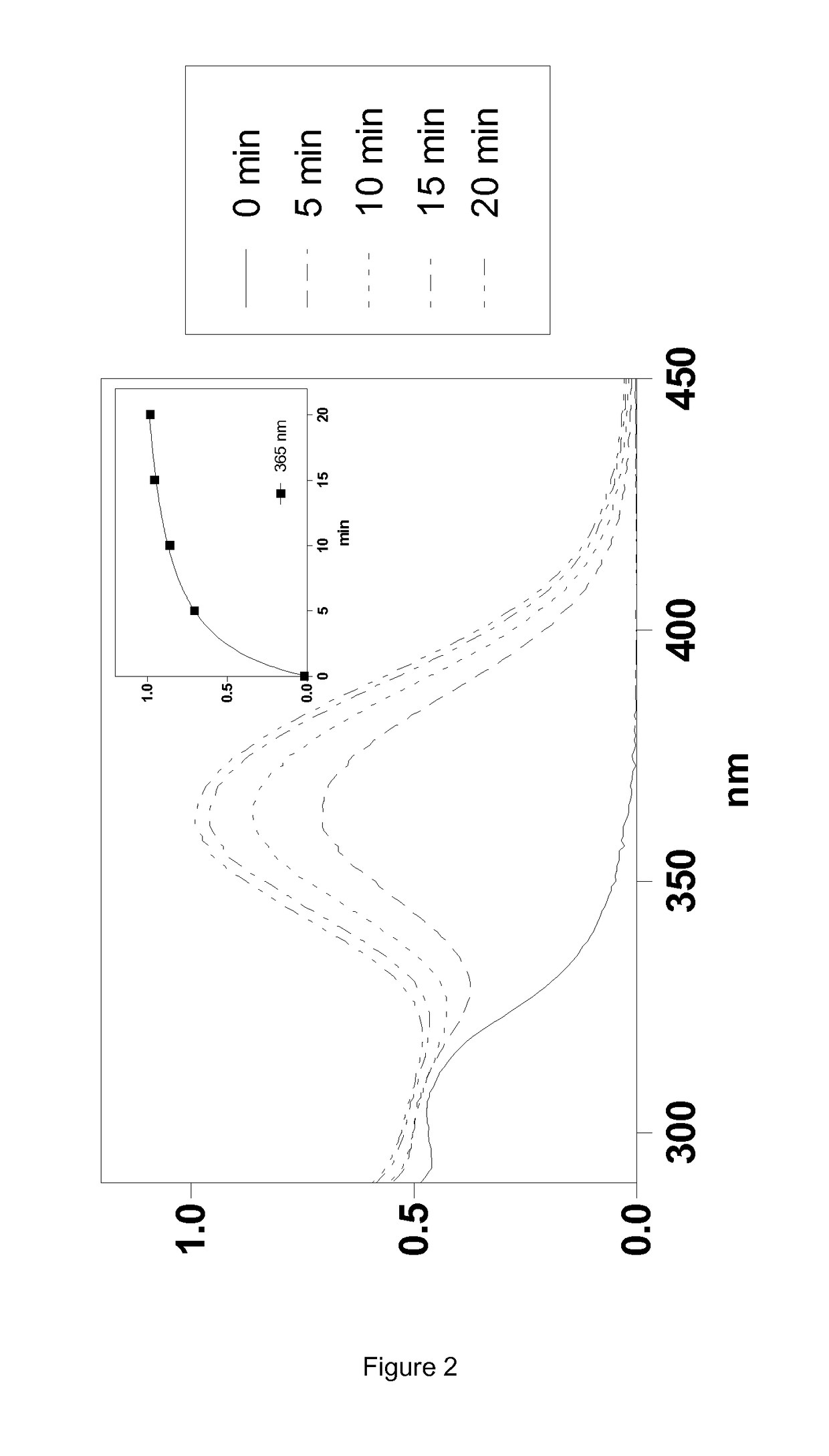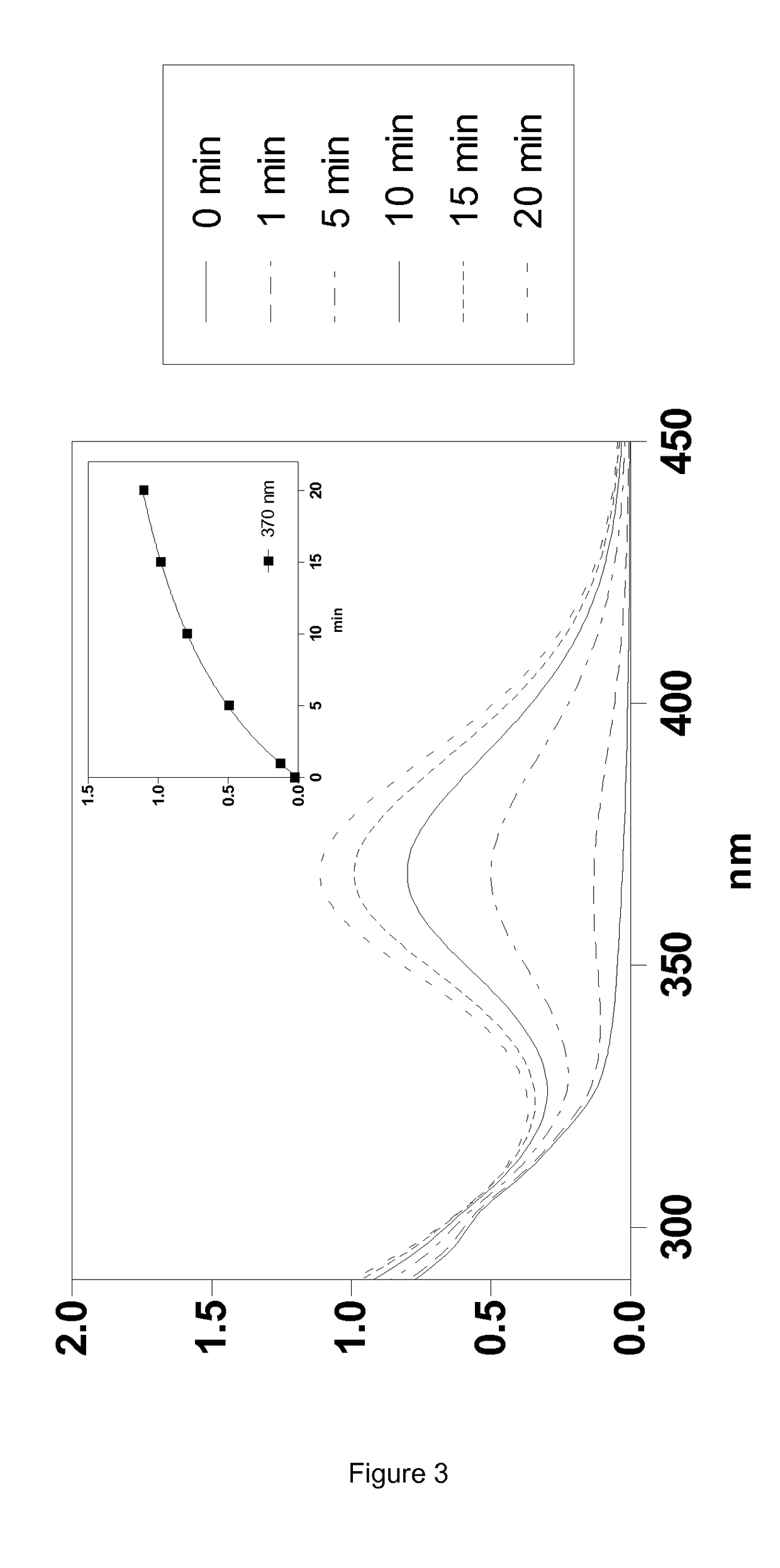Silylated Imine And Carbamate Polymeric Benzoate Compounds, Uses, And Compositions Thereof
a technology of silylated imine and carbamate, which is applied in the field of organic silica polymer, can solve the problems of increasing exposure to damaging sunlight, affecting the protection effect, so as to achieve the effect of fast and efficient conversion and loss of protecting efficiency
- Summary
- Abstract
- Description
- Claims
- Application Information
AI Technical Summary
Benefits of technology
Problems solved by technology
Method used
Image
Examples
example 1
Synthesis of 3-(diethylamino)phenyl 4-((3-(triethoxysilyl)propyl carbamoyloxy)methyl)benzoate (Compound 1)
[0211]
Step 1: Synthesis of 4-formylbenzoyl chloride
[0212]0.92 g (6.13 mmol) of 4-formylbenzoic acid were suspended in 50 mL of anhydrous toluene. 16 mL of thionyl chloride (0.22 mol) were added and the resulting suspension was heated at 130° C. for 3 hours under nitrogen atmosphere, then cooled to room temperature and the solvent evaporated under reduced pressure. 50 extra mL of toluene were added and evaporated under reduced pressure to eliminate possible remaining thionyl chloride. This process was repeated twice. The solid obtained was used immediately without further purification.
Step 2: Synthesis of 3-(diethylamino)phenyl 4-formylbenzoate
[0213]1.01 g (6.13 mmol) of 3-(diethylamino)phenol were suspended in 50 mL of dichloromethane and solubilized by adding 0.85 mL (6.13 mmol) of triethylamine. The resulting solution was stirred for 30 minutes and after this time a solution c...
example 2
Synthesis of 3-(dimethylamino)phenyl 4-((3-(triethoxysilyl)propyl carbamoyloxy)methyl)benzoate (Compound 2)
[0219]
Step 1: Synthesis of 4-formylbenzoyl chloride
[0220]0.92 g (6.13 mmol) of 4-formylbenzoic acid were suspended in 50 mL of anhydrous toluene. 16 mL of thionyl chloride (0.22 mol) were added and the resulting suspension was heated at 130° C. for 3 hours under nitrogen atmosphere, then cooled to room temperature and the solvent evaporated under reduced pressure. 50 extra mL of toluene were added and evaporated under reduced pressure to eliminate possible remaining thionyl chloride. This process was repeated twice. The solid obtained was used immediately without further purification.
Step 2: Synthesis of 3-(dimethylamino)phenyl 4-formylbenzoate
[0221]0.84 g (6.13 mmol) of 3-(dimethylamino)phenol were suspended in 50 mL of dichloromethane and solubilized by adding 0.85 mL (6.13 mmol) of triethylamine. The resulting solution was stirred for 30 minutes and after this time a solutio...
example 3
Synthesis of 3-methoxyphenyl 4-((3-(triethoxysilyl)propylcarbamoyloxy)methyl)benzoate (Compound 3)
[0227]
Step 1: Synthesis of 4-formylbenzoyl chloride
[0228]0.92 g (6.13 mmol) of 4-formylbenzoic acid were suspended in 50 mL of anhydrous toluene. 16 mL of thionyl chloride (0.22 mol) were added and the resulting suspension was heated at 130° C. for 3 hours under nitrogen atmosphere, then cooled to room temperature and the solvent evaporated under reduced pressure. 50 extra mL of toluene were added and evaporated under reduced pressure to eliminate possible remaining thionyl chloride. This process was repeated twice. The solid obtained was used immediately without further purification.
Step 2: Synthesis of 3-methoxyphenyl 4-formylbenzoate
[0229]0.76 g (6.13 mmol) of 3-methoxyphenol were suspended in 50 mL of dichloromethane and solubilized by adding 0.85 mL (6.13 mmol) of triethylamine. The resulting solution was stirred for 30 minutes and after this time a solution containing 4-formylbenz...
PUM
| Property | Measurement | Unit |
|---|---|---|
| size | aaaaa | aaaaa |
| size | aaaaa | aaaaa |
| temperature | aaaaa | aaaaa |
Abstract
Description
Claims
Application Information
 Login to View More
Login to View More - R&D
- Intellectual Property
- Life Sciences
- Materials
- Tech Scout
- Unparalleled Data Quality
- Higher Quality Content
- 60% Fewer Hallucinations
Browse by: Latest US Patents, China's latest patents, Technical Efficacy Thesaurus, Application Domain, Technology Topic, Popular Technical Reports.
© 2025 PatSnap. All rights reserved.Legal|Privacy policy|Modern Slavery Act Transparency Statement|Sitemap|About US| Contact US: help@patsnap.com



